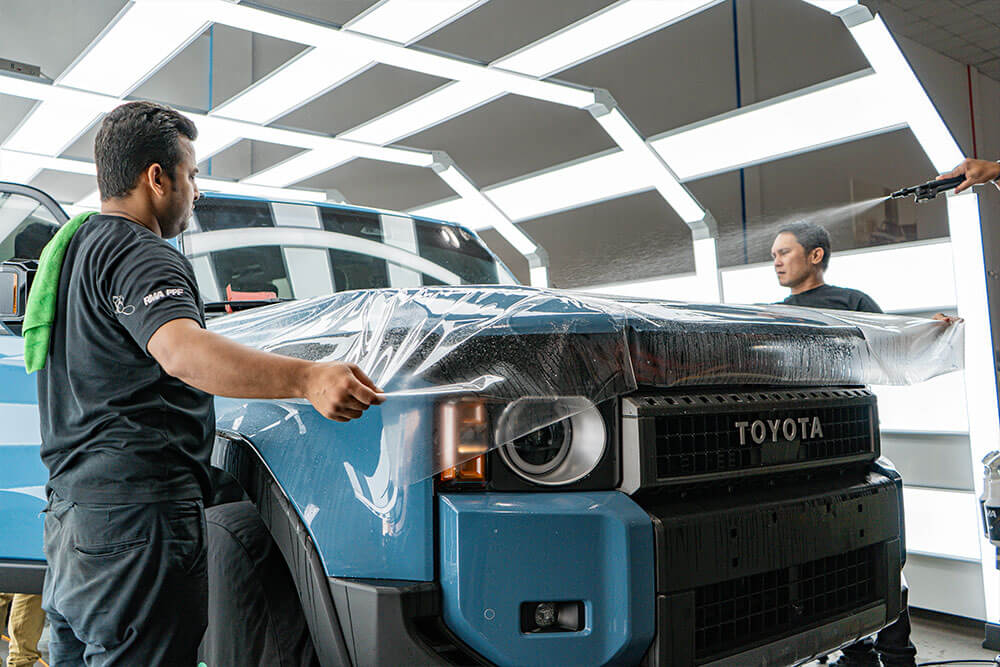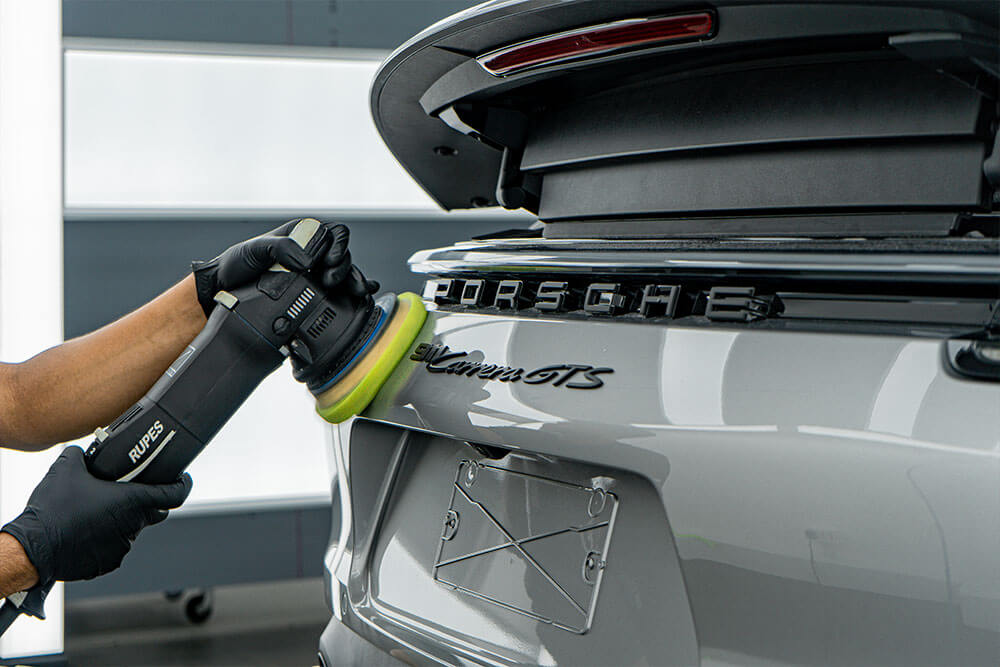
Applying Paint Protection Film (PPF) is a meticulous process that requires skill, patience, and attention to detail. This transparent film acts as a shield, preserving the pristine look of a car’s paint by guarding against scratches, debris, and environmental wear. Here’s a step-by-step guide to the journey of applying PPF, ensuring your car’s finish remains flawless and protected.
Step 1: Initial Inspection and Cleaning
The journey begins with a thorough inspection of the vehicle’s paint condition. Any minor imperfections, such as scratches or marks, are noted and corrected beforehand, as these could affect the film’s smooth adherence. Once assessed, the car undergoes a detailed cleaning to remove all traces of dust, dirt, and residues. This stage ensures that no particles are trapped under the film, which could create blemishes or bubbles.
Step 2: Surface Preparation
Surface preparation is essential for a successful PPF application. After cleaning, the technician gently polishes any areas that may have small imperfections to create an even, flawless surface. Any wax, oil, or previous coatings are also removed, ensuring the film bonds directly to the paint for long-lasting results. A spotless and perfectly smooth surface enhances the film’s effectiveness and preserves the car’s paint in the best condition possible.
Step 3: Pre-Cutting the Film
Each section of the car, from the hood to the mirrors and bumpers, requires a precisely shaped piece of film. Using specialised software and templates, the film is pre-cut to fit each part of the car with exceptional accuracy. This pre-cutting process ensures a custom fit, allowing the film to seamlessly cover the curves and contours of each area. Pre-cut film not only provides a flawless look but also minimises any trimming once applied, reducing the risk of scratches during installation.
Step 4: Positioning the Film
Positioning is a delicate step. The technician sprays a solution onto the car’s surface to allow the film to slide into the correct position without immediately sticking. Once placed, the film is carefully aligned to match the edges and contours of each area. Skilled hands adjust and reposition the film until it perfectly matches the shape of each panel, ensuring full coverage and a smooth, bubble-free finish.
Step 5: Bonding and Sealing
With the film now in place, the technician begins the bonding process. Using a soft squeegee, they work out any air or water trapped between the film and the paint, pressing gently but firmly to secure the film onto the surface. This step requires a steady hand and an eye for detail to achieve a seamless finish. Any edges are carefully sealed to prevent peeling, and the film gradually bonds to the paint, creating an almost invisible layer.
Step 6: Final Inspection and Finishing Touches
Once the film is applied, a final inspection ensures that every detail is in place. The technician examines the surface for any remaining bubbles, imperfections, or loose edges. If any adjustments are needed, they are done promptly to ensure the film lies perfectly flat. This careful inspection brings the process to completion, leaving the car with a flawless protective layer.
Aftercare and Curing
After the application, the film needs a short curing period to settle completely. During this time, it’s essential to avoid washing the car or exposing it to extreme conditions. Proper care during the curing stage helps the film bond securely to the paint, ensuring long lasting protection.
Final Thought
Applying PPF is a skillful process that goes beyond simply placing a film on a car. Each step contributes to preserving the car’s paint in its original beauty, shielding it from the effects of time and environment. With this meticulous approach, PPF offers an unparalleled solution for keeping your vehicle looking new, so you can enjoy every journey knowing your car remains protected and immaculate.


